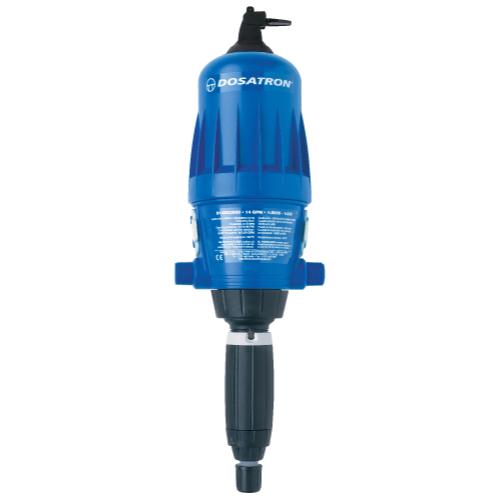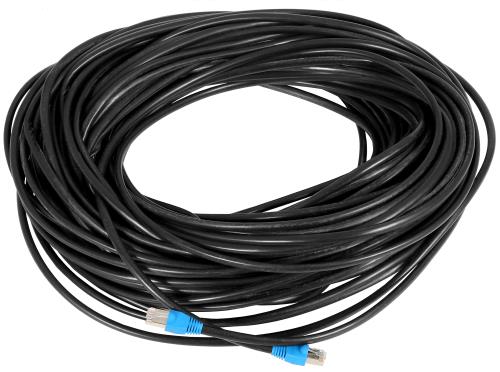Prepping Your Summer Garden
Feeling ready to take advantage of this delightful spring weather and start getting your hands in the dirt? We sure are!
So hopefully you’ve had enough time to get through all the steps lined out in part one of our Summer Garden Series. If so, you know what you are going to grow, where or in what you will grow it, and, if you’re starting in the ground, what your soil type is. Our next steps are going to be preparing your soil or other growing medium, getting your gardening supplies, and starting seeds or buying transplants. So let’s dive into our second edition!
Prepping Your Summer Garden
Step 1: Prepping Soil or Site

Your soil test is good and you’re going to grow directly in the ground.
 Lucky you! You’re in the Goldilocks zone of soil with a nice loamy, rich ground. All you’ve got to do with your site is make sure to get rid of any weeds, and you should be good to go. Some organic weed control options to get you going are sheet mulching (to smother the weeds) or hand pulling (if you’ve only found a few).
Lucky you! You’re in the Goldilocks zone of soil with a nice loamy, rich ground. All you’ve got to do with your site is make sure to get rid of any weeds, and you should be good to go. Some organic weed control options to get you going are sheet mulching (to smother the weeds) or hand pulling (if you’ve only found a few).
If you’ve got a space that’s super overrun with weeds and are patient enough to wait to start growing there, you can solarize your garden area by covering it with a sheet of clear plastic for 1 to 2 moths of hot sunny weather, usually starting in the late summer. This process should kill most weeds, weed seeds, and soil pathogens and will have you ready to start some fall crops or green manure cover crops that will set you up great for growing veggies next year.
Your soil needs some amending
 So if your soil is in need of some love, first you’ll need to determine what it needs. Generally, the addition of organic matter is a good solution for soils that are either too sandy or too clayey. However, each requires a different type of organic matter.
So if your soil is in need of some love, first you’ll need to determine what it needs. Generally, the addition of organic matter is a good solution for soils that are either too sandy or too clayey. However, each requires a different type of organic matter.
Sandy soils will benefit from well-aged compost or manure in order to help increase the water holding capacity of these loose and quick-draining spots.
Clay-heavy soils will be helped by the addition of fibrous organic matter like composted mulches, straw, or well-rotted manure. These materials will improve aeration and drainage in this soil type.
No matter which type of soil you are amending, it is good to have a mix of short and long term solutions. Things like grass clippings and manure will decompose rapidly, breaking down and feeding your plants quickly in the first few years. Other soil components like straw and mulch will stick around for much longer and provide benefits well into the future. Similarly, calcium additions like gypsum, dolomitic limestone, or calcitic limestone will quickly provide this nutrient to plants, but using other materials like eggshells or oyster shells will provide a longer-term solution.
One important caveat is to not over-amend your soil. It may take years to get the ideal soil, so don’t try to rush it and create more problems for yourself. For annual vegetable and herb gardens, it’s likely that you’ll be able to keep adding more amendments each year or each season, and overdoing it in one year can result in nutrient imbalances which stunt plant growth (too little available nitrogen) or burn them (too much available nitrogen), or even cause salt build-up in your soils (this is particularly a problem with the use of manures). Uh-oh.
You’re growing in a container or raised bed
 If you’ve decided to build your own raised beds, you’ll need some materials. We recommend picking sustainably certified wood or using re-purposed materials like you might find at a used building supply store. Here in Boulder, we’ve got ReSource Yard, but many communities have a Habitat for Humanity ReStore, another great place for finding gently-used building supplies. You could also make a garden by finding discarded pallets and using those to build your raised beds. Just make sure that their wood hasn’t been treated with any chemicals: if you find a stamp with the letters HT, meaning heat treated, then you’re good to do. A second option would be buying some pre-built raised beds or ready to assemble building kits.
If you’ve decided to build your own raised beds, you’ll need some materials. We recommend picking sustainably certified wood or using re-purposed materials like you might find at a used building supply store. Here in Boulder, we’ve got ReSource Yard, but many communities have a Habitat for Humanity ReStore, another great place for finding gently-used building supplies. You could also make a garden by finding discarded pallets and using those to build your raised beds. Just make sure that their wood hasn’t been treated with any chemicals: if you find a stamp with the letters HT, meaning heat treated, then you’re good to do. A second option would be buying some pre-built raised beds or ready to assemble building kits.
Once you’ve built your bed, you’ll need to clear and level the site it will go on, and it’s best to incorporate some sort of organic weed barrier at the bottom. We recommend layers of burlap and/or cardboard at the bottom of the bed, and a thick layer of mulch around the outside path area to keep weeds down.
If you’re going to go for container gardening in a smaller space, you’ll have to find some large containers and a soil or soilless mix to fill them with. Most plants like to have at least 6–10” of depth for their roots, with root crops needing more. There are plenty of self-watering planter designs to check out that will keep your maintenance time down if you’re feeling busy.
 Once you’ve picked your container, you’ll need to find a soil blend to fill it with. Look for a complete potting mix that is well drained and contains organic ingredients like topsoil, coco coir, perlite, and/or vermiculite, and make sure your mix contains an organic nutrient source like compost or worm castings.
Once you’ve picked your container, you’ll need to find a soil blend to fill it with. Look for a complete potting mix that is well drained and contains organic ingredients like topsoil, coco coir, perlite, and/or vermiculite, and make sure your mix contains an organic nutrient source like compost or worm castings.
For some extra fun, you can make your own by buying individual components for a custom mix. Use clean and sanitized topsoil, compost, sand, coir, bark, perlite, vermiculite, limestone, and a natural fertilizer source.
Step 2: Get Your Gardening Supplies

All gardeners need a tool set, so pick up some good quality hand tools for a start. A shovel and rake will be helpful for spreading and mixing those amendments into the ground, and a hoe will make weeding go quickly. A wheelbarrow or cart is great for hauling amendments and moving flats of transplants from their nursery location to the planting area, if you’ve got a large space.
You’ll also need flats or small containers to start seeds in. Buy some pots or find your own DIY or upcycled solution, but make sure that each container has adequate space for roots and is large enough that it won’t dry out too quickly (egg cartons are not an ideal choice here). Be ready to transplant seedlings into bigger containers as they grow.
If you’re starting seeds and/or growing indoors for season extension, a lack of outdoor space, or for a fun and air-purifying experiment, you’ll need some growing lights. We recommend using high output fluorescent bulbs for starting seeds and for growing herbs, root veggies, or leafy greens. If you want to get some fruits (tomatoes, peppers, squash) out of your indoor garden, you’ll need a brighter and more powerful lighting system to make plants switch over to flowering and fruiting. Here, we’d recommend an LED setup or HID metal halide lamps. You’ll also need a timer system for the lights and some fans to keep air flow going and promote healthy plants.
All plants need water, so get a watering can based on the size of your growing space. Small indoor herb gardeners can get by with a cute little watering can, or go for a bigger one or an irrigation system for your outdoor garden.
Step 3: Getting your plants ready

Starting seeds
No matter what and where you’re growing, you will need plants! Seeds or starts should be chosen based on your timeline, average frost dates, and what you’re growing. Check out our extensive Phytotheca database for the plants you’ve chosen to see how easy or hard they are to start from seed, how long they take to germinate, and whether we recommend that you plant inside or outside. Based on this information, you can easily decide which seeds are worth buying, which to start on your own indoors, and which can be sowed directly in your soil or growing media outdoors.
 If you’ve decided to buy starts from a local farm or grower, you can skip this next step! But we recommend trying at least a few seeds indoors on your own for a growing experiment.
If you’ve decided to buy starts from a local farm or grower, you can skip this next step! But we recommend trying at least a few seeds indoors on your own for a growing experiment.
First, fill your flats, containers, or small cups with a seeding mix. This soilless mix does not need any nutrients, as seeds actually contain all they need to grow in their first set of “seed leaves.” The mix also needs to be sterile, so that your baby plants can germinate in a clean and healthy environment. This initial phase of development is super important for plants, so they need to be kept moist and in a well-lit and stable temperature environment. Check out the Phytotheca entries for information on what temperature each seed needs to germinate, and use a heat mat if your growing conditions indoors aren’t adequately warm.
Caring for Starts and Transplants
Most seeds don’t need light to germinate, but once they’ve sprouted leaves, they will need a light source, as will any transplants you’re not quite ready to put in the ground yet. Keep lights close to the plants to avoid seedlings getting too leggy and weak stemmed, and adjust the light up as plants grow to keep them from burning. They’ll also need some nutrients as they get larger. Once a week, you should water little plants with a very dilute solution (half to quarter strength) of liquid seaweed, fishmeal, or balanced liquid fertilizer. Keep the soil evenly most at all times, and provide air flow for plants with a small fan to strengthen them.
Before planting transplants, whether you’ve grown them or bought them, they’ll need to adjust to outside conditions. This process is called hardening off and requires you to set your plants outside, in a shady location at first, for gradually increasing time periods during each day. You can also slowly increase the amount of direct sunlight that plants receive each day, until they are ready and well adapted to the conditions you will be planting them in.

OK, that’s it for this edition. Check back in soon or keep an eye on our Facebook page for the next edition in our summer garden series, and what might be the most exciting phase of your gardening process: Planting Your Summer Garden! We can’t wait.




 Depending on where you live, you can generally make a good guess as to how much natural precipitation you are going to get during the summer.
Depending on where you live, you can generally make a good guess as to how much natural precipitation you are going to get during the summer. will have the freedom to hand pick the soil that you are going to be working with. In order to make the most accurate choices, you will need to select your plants first, so feel free to skip to Step 3.
will have the freedom to hand pick the soil that you are going to be working with. In order to make the most accurate choices, you will need to select your plants first, so feel free to skip to Step 3. 












